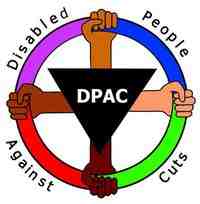
The minister for disabled people has admitted to complete ignorance about the model that lies at the heart of his government’s programme of disability benefit reforms.
Justin Tomlinson was asked what his thoughts were about the biopsychosocial (BPS) model of disability in a question-and-answer session at a meeting of the all-party parliamentary disability group on Tuesday.
Ministers have repeatedly spoken of how the BPS model is central to their disability benefit reform programme, and successive governments have relied on it to justify slashing disability benefits for more than a decade.
Ellen Clifford, from Inclusion London, told the meeting – while Tomlinson was out of the room voting – that the BPS model would be “underpinning” the government’s health and work green paper, which will be published later this year.
She said that comments by new work and pensions secretary Stephen Crabb earlier in the meeting about the need for closer integration between work and health showed that this green paper would also be based on the BPS model.
She said BPS was a “punitive” approach which “locates the problem within the individual” and had been shown to be “not an effective way of supporting disabled people into employment”.
In response to her question, which was read to him on his return from voting, Tomlinson said that the BPS name sounded “really impressive”, and added: “I will let somebody much greater than me decide what’s the right thing.”
He then added: “I’m afraid I don’t even know what it is.”
Earlier this month, new research by three disabled academics concluded that the BPS model “does not represent evidence-based policy”, and was riddled with inconsistencies, misleading statements and “unevidenced” claims.
BPS under-pinned Labour’s new out-of-work disability benefit employment and support allowance (ESA) and its work capability assessment (WCA), which was introduced in 2008 and has since been linked repeatedly to health relapses, episodes of self-harm, and even suicides and other deaths, among those who have been assessed and found fit for work.
It has also “played a key role” in the tightening of eligibility criteria for ESA and other disability benefits by the subsequent coalition and Tory governments, and the introduction of the new personal independence payment and universal credit.
The three academics said in their research that the BPS model argued that it was “the negative attitudes of many ESA recipients that prevent them from working, rather than their impairment or health condition”, essentially branding many benefit claimants “scroungers”.
This allows supporters of BPS – including a string of Labour and Tory government ministers – to draw a distinction “between ‘real’ incapacity benefit claimants, with long-term and incurable health conditions, and ‘fake’ benefit claimants, with short-term illness”.
Clifford said after the meeting that the minister’s ignorance about the BPS was “really concerning”, because it had been pivotal to the government’s policies on disability benefits and was the “fundamental model on which welfare reform is based”.
She said: “Since 2010, that model has not only failed disabled people but caused untold avoidable suffering and harm.
“His response suggests that he doesn’t actually know what he is doing.”

only following orders old bean just like that summer of 41 they show how to but really its a cull of the stock of disabled peoples jeff3